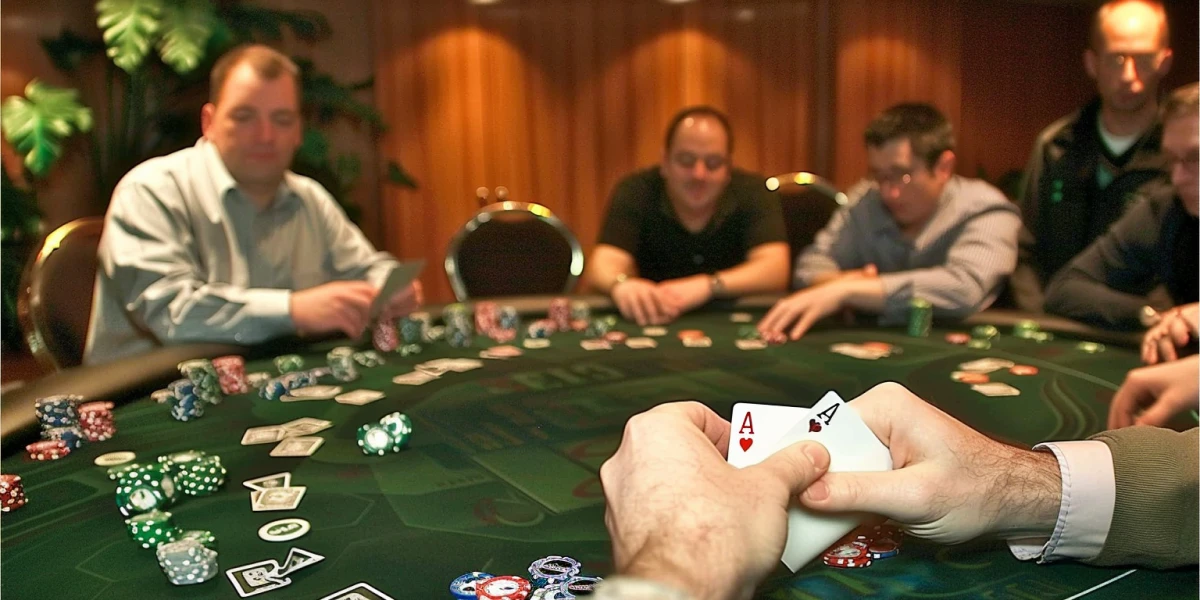Poker at Home: How-tos and What Nots You Should Know


1.0
Default
Do you find yourself itching to try something new and fun with your friends? Are you tired of the escape rooms and uber-expensive dinner plans? Maybe it’s time to step it up and host a poker night at home. There’s so much fun you could have when planning a poker night with your favorite people. Read on to learn how to get started when planning your own poker night at home with your friends.
One of the initial aspects of planning poker night at home is to understand who’s willing to join and play, which types of poker they play, and what rules are agreed upon or which ones can be tweaked in the process. The best part about poker night at home is that you can modify some of the rules that best suit everyone’s playing styles(a popular example would be strip poker to add some spice to your game!). Here are some key considerations when planning poker night for you and your poker pals.
This is probably the most important part of poker night; communication among all invited players. Create a group chat with the players you’ve invited, as this will not only make the event details clearer, but it’ll also help everyone stay aligned and informed about any last-minute guests who want to join or cancel in the foreseeable future.
Stick to the basics, especially if it’s your first time hosting poker night. This will probably mean a good game of Texas Hold’em, 5-Card Draw, and Omaha poker. One way to decide on this is to create a poll in your group chat and wait for everyone to vote on which game they would all like to play come poker night.
Poker night is pretty straightforward with essentials, including poker chips, a poker table, and a timer to get the ball rolling. You’ll also want to make sure you have enough decks of cards on hand, just in case one gets worn out or damaged during the game. It's also a good idea to provide some comfortable seating arrangements for your guests to settle into for the long haul. So, get those seat cushions ready!
To set the ambiance, consider dimming the lights and putting on some background music to create that classic poker atmosphere. Lastly, don't forget about refreshments! Having snacks and drinks available ensures that everyone stays fueled and hydrated throughout the night of intense card-playing action.

Once you’ve chosen the type of poker game you’re going to play, it’s time to establish the rules. Firstly, though, it’s important to consider whether it’s a low stakes or high stakes poker game when setting up the rules. Here are some other factors to consider when laying down the rules:
If your first poker night was a hit, then it’s time to make it a regular gathering. For any type of group beyond friends and colleagues, bi-weekly or monthly poker nights are great for morale and establishing some friendly routine amongst your circles. Remember, don't alter the date if you've already set one. Although it's usual to feel tempted when some people cancel on you, you can't expect to have everyone there at all times.

Ideally, your game night should occur on the same day as that cycle and at a regular interval. It may be the third Friday of the month that you get together once a month. Alternatively, you may choose a quarterly game for the time-pressed family man on a Saturday afternoon. People can easily mark it on their calendars in advance, and you won't need to worry about juggling many schedules. Everyone is free to arrive at the designated hour, and those who are unable to do so are not.
So, there you have it – all the tips and tricks you need to host the best poker night with your besties! From setting up the perfect ambiance to establishing fair rules and scheduling regular gatherings, your poker nights are sure to become legendary among your friends. Gather your chips, shuffle those cards, and get ready for an evening filled with laughter, strategy, and maybe even a little friendly competition. It's time to ante up and make memories that will last a lifetime!
Learn more about common poker errors to watch out for to up your poker gameplay on your next poker night. Read more from our blogs at GambleSpot.

July 26th, 2024
7 Best Horses that Made A Name in Horse Racing
July 24th, 2024
The Role of the Banker in Baccarat - and Why This Could Sway Your Odds
July 19th, 2024
5 Best Slot Games for Art Lovers to Feast Their Eyes on
July 16th, 2024
Fact or Fiction: Pai Gow Edition – What First-time Players Should Watch Out For
July 15th, 2024
Tech and Horseracing: What to Know about Digitizing the Horsebetting Experience
July 9th, 2024
5 Online Casinos with Less than $20 Minimum Deposit You Should Check Out in 2024
July 3rd, 2024
Debunking Common Lottery Myths: What First-time Bettors Should Know
July 2nd, 2024
What to Know About the State of Michigan and Online Poker in 2024
July 1st, 2024
Debunking Common Baccarat Myths: Why You Should Know Better
June 27th, 2024
Understanding the Legal Aspects of Horse Betting in the US: What to Know in 2024Are you sure?
This will delete all chat history, and I will not remember what we were talking about.
✔
Todays Hot Deals